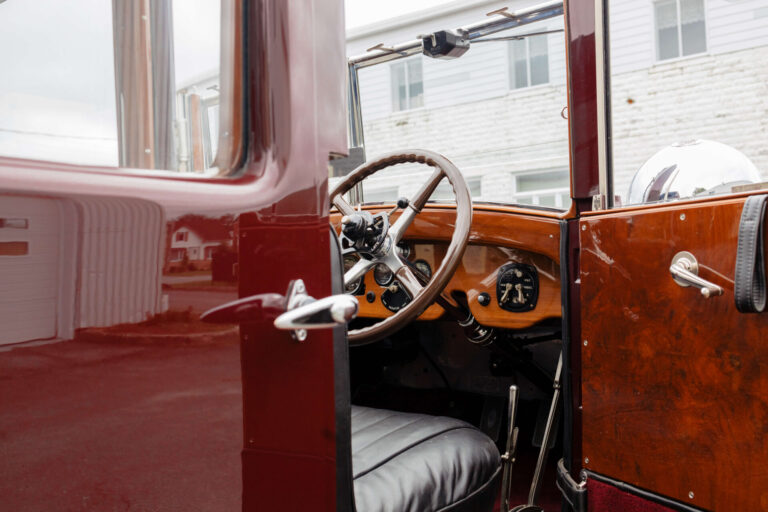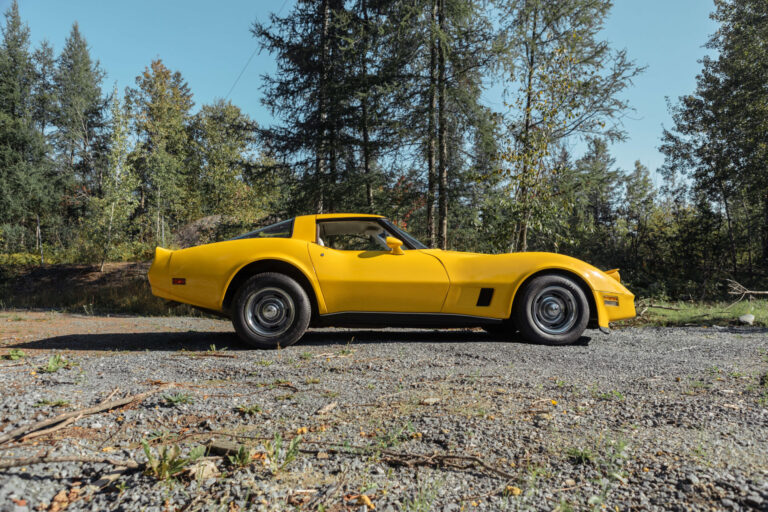The Automotive Dream “One man and his dream had not simply left the world with an engine and four wheels; Henry Ford and his Model T had influenced people's everyday lives - where they lived, how they spent their leisure time, even how they viewed themselves.” - Gary...
Delage D8 15S – 1933

Photo credit - Good Vision Prod
Recent posts
Lagonda 16/80 Special Six 1933
English Touring The car we present to you this week is the Lagonda 16/80 Special Six in the Demers Car Collection. Lagonda was a luxury British car brand that Aston Martin eventually absorbed. Through its association with Aston Martin, it is sometimes hard to remember...
An Introduction to Lagonda
Before Aston Martin “The history of Lagonda cars is synonymous with sophistication, opulence, and groundbreaking performance” - An article for Discovery UK Today, we may recognize the name Lagonda from its association with Aston Martin. Before these two brands...
Cadillac Model A 1903
The Standard of the World “No other American car on the market in the first decade of the century was constructed to higher standards than Cadillac.” - Stephen W. Sears in The Automobile in America Some of you may know that Cadillac has long had the slogan “Standard...
A Fabulous Grand Tourer
“The D8 was perhaps Delage’s finest example of automobile construction.” – Rob Leicester Wagner in Classic Cars
French classic cars are one of the many attractions in the Demers Car College. In their time, Delage cars were the height of French luxury and style. The one we introduce to you this week is the 1933 Delage D8 15S. Some have argued that the D8s are the most significant cars of the French brand. Described as a Grand Tourer (GT) it is in excellent condition. Keep reading to learn more about the context in which it came to be, the particularities of this model and what makes a GT.

The Context
“The D8 series in all its glory was one of the most desirable high-performance cars being built in France, or perhaps in the whole of Europe.” – Graham Robson in Classic Cars
We have Louis Delage to thank for the beautiful cars his brand made. Many consider them as some of the most elegant classic cars. Delage cars weren’t just pretty though. The brand had a great name in racing, and its production cars also offered great performance.
Like most other car constructors, Delage faced difficulties during the Great Depression. This is the exact period in which Delage made the D8 and its early variants. Many car makers adapted to these difficult times by cutting costs and making smaller cars, but not Delage. Louis prided himself in making some of France’s greatest cars and the D8 would be no different. Building on their racing legacy, the D8s were high-performance cars, dressed by some of Europe’s best coachbuilders. Made from 1930 to 1935, this model was one of the most desirable cars made in Europe in that difficult period.
Although this desire to perpetuate greatness was admirable, financial troubles proved to be greater. In 1935, Delage faced liquidation. Eventually, Delahaye, another great French car producer and competitor, took over the company. In those years, Delahaye was regaining traction and acquiring the prestigious Delage brand improved its reputation in the design department.

The D8-15
The Delage D8 was first introduced at the Salon de Paris in 1929 and made until 1933. It was applauded for the perfection of its engineering. Developed around a straight-eight-cylinder engine, it offered great and smooth motoring. The D8 was both a high-performance and glamorous car, sporting fabulous coachwork. The buyer could select the coachwork from the catalog or order one on demand from one of the many great coachbuilders of the time.
Despite the economic context, the D8 was made with wealthy clients in mind. In The Encyclopedia of Classic Cars, Kevin Brazendale explains that “There’s no doubt that the D8s were the most glamorous of all Delage road cars.” Unfortunately, sales were low and completed cars gathered dust on showroom floors. Investment in an extravagant eight-cylinder car proved to be financially disastrous.
The D8-15S in the Demers Car Collection is one of the many variations of this glamorous model. The D8-15S had a shorter, sportier chassis and Delage only produced it for two years between 1933 and 1935. We believe that this particular car was first plated in the United Kingdom in 1937. This lag between production and plating could be another sign of how slow sales were at Delage in this period. Although we do not have indications on who first coached this car, the current restoration is believed to have followed Partout lines. Delage cars weren’t discrete, their opulent coachwork was often as flamboyant as their wealthy owners. The one you see here is a GT made in a cabriolet style and painted in a rich orange hue. One has to notice such a car passing them by.

What is a GT?
The Delage D8-15S that you see here is a true Grand Tourer, but what do we mean by that? The GT name comes from the Italian “Gran Turismo” cars which translates to “Grand Tourer.” GT cars are made to be comfortable on long distances. They are sports cars with the comforts of more luxury equipment and luggage space. Unlike sports cars or conservative, luxury cars, performance, comfort and style need to all be put forward in a GT. An important feature of their engine is its capacity to maintain high speed over long periods of time, not just sprints. The GT appellation was first introduced in the late 1920s but truly became popular in the early 1950s.
In the 1930s, France had some of the best driving conditions in Europe. The roads were good and speed limits were more liberal than in other European countries. Not everyone had a car yet so traffic was also negligible. This fostered the conditions for truly pleasurable motoring. Driving from the city to a remote resort destination seemed to be Delage’s D8 true calling. These conditions were ideal for GTs to thrive.

What Now?
“The D8 was a car of great presence and style, not aimed at a shy or retiring clientele.” – The Encyclopedia of Classic Cars edited by Kevin Brazendale
The D8-15 was replaced in 1936 by the D8-120, the first Delage made under Delahaye’s supervision. Building on the Delage model, it had a performant Delahaye engine and was well received both in its time and today. The D8-120 is also thought of as the last true Grand Touring Delage. This, and the glory of the D8 series, makes the one in the Demers Car Collection worthy of admiration. It is an important part of French automotive history as it marked the fall of a well-respected, mythological brand.
Next week on the blog, we have the chance to interview Lamborghini expert Olivier Nameche. You’ll be able to find the full interview on our YouTube channel or a summary in next week’s blog article.

The Nitty Gritty
- 4-liter, straight-eight engine
- Single Smith Barraquand five-jet carburettor
- Single-dry-plate clutch
- Four-speed manual gearbox (without synchro-mesh)
- Separate pressed-steel chassis frame
- Half-elliptic leaf springs front and back suspension
- Drum and servo brakes
- 120 hp
- Max speed: almost 100 mph or about 160 km/h



